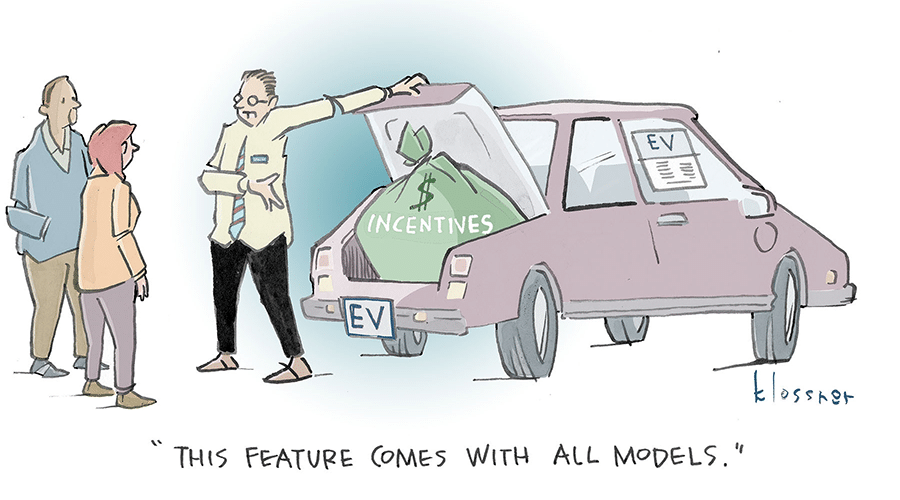We’ve written a lot about the financial benefits of solar, electric vehicles, and energy efficiency (spoiler alert: there are a ton of them). Speeding the transition to a clean energy future means getting these game-changing tools in the hands of as many people as possible, as fast as possible. One way to help do that is through financial incentives that make the initial purchase of these products easier.
A plethora of tax credits, utility incentives and other rebates for electric vehicles, solar panels and energy efficiency make it easier to transition to a clean energy future. Let’s break down a sampling of federal and state incentives and how to use them.
Electric vehicles
The federal government offers a $7,500 tax credit for most new electric vehicles. Many new EVs are price below $40,000, which equates to nearly 20% off the sticker price. This dollar amount does decrease for each manufacturers as it hits certain sales thresholds, and at the time of this initial post (early 2022) some of the more well-known names like Tesla and GM no longer qualify for the credit. However, the vast majority of car makers such as Ford, Hyundai and Kia still qualify for the full $7,500 incentive.
Almost every state offers some incentive to purchase an EV, (check out both of these resources here and here to see what your state offers) from tax exemptions in such places as Washington state and Washington, D.C., to cash rebates in such states as California, Massachusetts and Oregon. These incentives range in value based on a person’s income and/or the size of the purchased electric vehicle’s battery. Additionally, many utility companies across the country offer cash rebates for EV owners who want to install Level 2 chargers in their homes.
So how are these credits and incentives applied when you’re at the dealership ready to buy your EV? You have to pay for the EV’s sticker price upfront — in cash or through a loan — and apply for those cash rebates after your purchase.
At tax time, Uncle Sam would knock off $7,500 from your federal taxes due. If you don’t owe that much in taxes, the credit rolls over to the following tax year. For state tax exemptions, you either wouldn’t have to pay a sales tax at the time of purchase or you wouldn’t have to pay other types of car taxes, depending on the type of exemption your home state offers.
What about would-be EV purchasers that aren’t able to take advantage of tax credits (which give the most benefit to households that have a large tax burden)? The Biden Administration proposed big changes to this program in its Build Back Better plan — changes that would help address that inequity and encourage the widespread adoption of EVs.
Among the proposed changes, it would make the tax credit refundable – meaning you’d get back any money left over after the IRS applies the EV credit to your tax bill. Used electric vehicles also would be eligible for the tax credit. And the credit would go up from $7,500 to $10,500 specifically for EVs made in the U.S. by union workers.
Though the Build Back Better Act failed to pass the Senate, Democrats in Congress want to move forward with the bill’s climate portion as a standalone climate bill. So there’s still some hope the Biden Administration will revamp the federal tax credit program for EVs and make it more accessible to individuals and families who earn low to middle incomes.
COMEDIANS CONQUERING CLIMATE CHANGE
Check out the latest episode from the podcast












